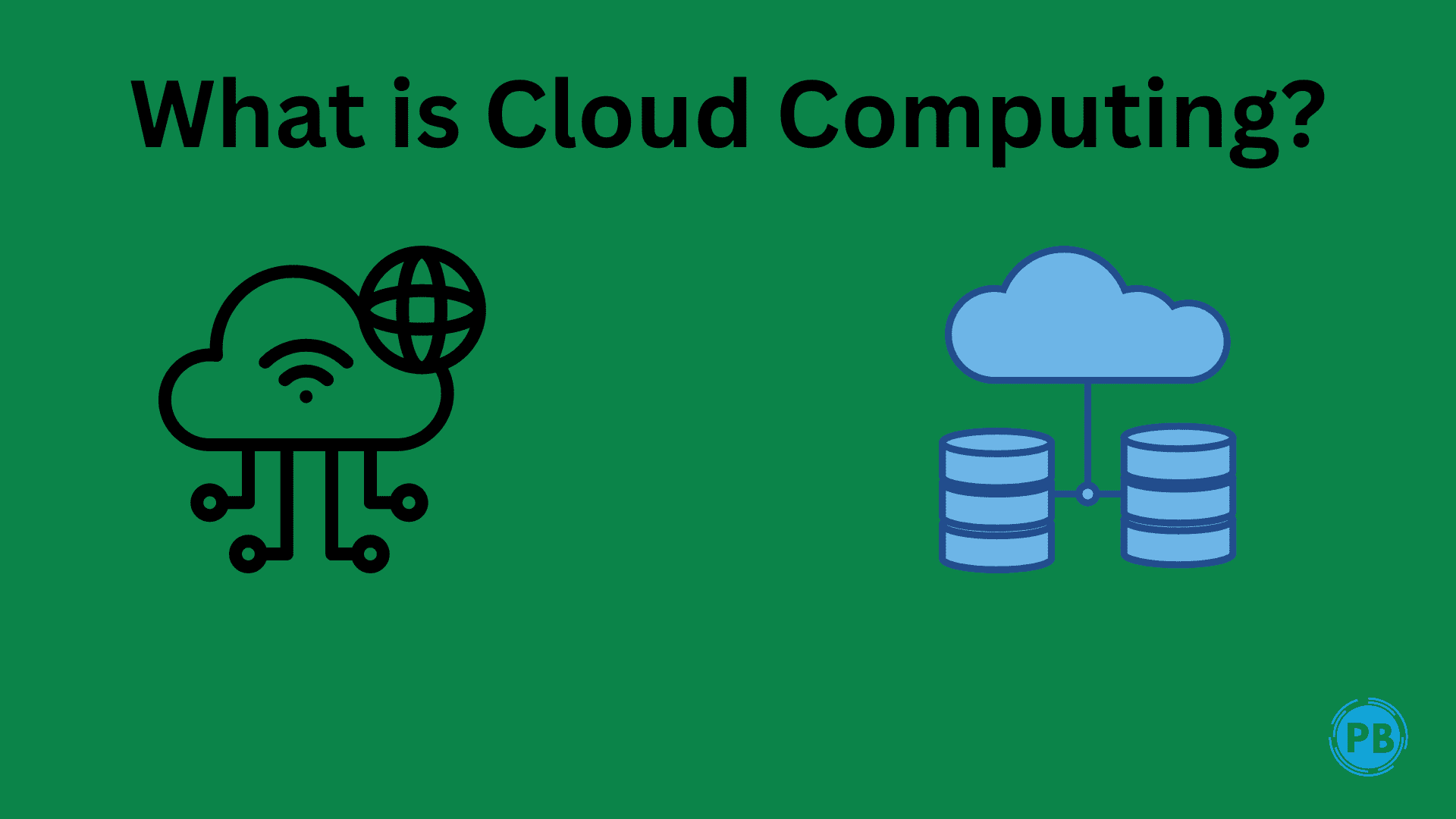
What kind of information will you get from this blog?
- What is the cloud computing?
- What are the examples of cloud computing?
- What are the types of cloud computing?
- What is cloud security ?
- Uses of the cloud computing.
Cloud computing transforms IT infrastructure into a utility: It lets you ‘plug into' infrastructure via the internet, and use computing resources without installing and maintaining them onpremises. Cloud computing is on-demand access, via the internet, to computing resources applications, servers, data storage, development tools, networking capabilities, and more hosted at a remote data center managed by a CSP. The CSP makes these resources available for a monthly subscription fee or bills them according to usage
Compared to traditional on-premises IT, and depending on the cloud services you select, cloud computing helps do the following:
- Lower IT costs: Cloud lets you offload some or most of the costs and effort of purchasing, installing, configuring, and managing your own on-premises infrastructure.
- Improve agility and time-to-value: With the cloud, your organization can use enterprise applications in minutes, instead of waiting weeks or months for IT to respond to a request, purchase and configure supporting hardware, and install software. Cloud also lets you empower certain users specifically developers and data scientists to help themselves to software and support infrastructure.
- Scale more easily and cost-effectively: Cloud provides elasticity instead of purchasing excess capacity that sits unused during slow periods, you can scale capacity up and down in response to spikes and dips in traffic. You can also take advantage of your cloud provider’s global network to spread your applications closer to users worldwide.
The term ‘cloud computing’ also refers to the technology that makes cloud work. This includes some form of virtualized IT infrastructure servers, operating system software, networking, and other infrastructure that’s abstracted, using special software, so that it can be pooled and divided irrespective of physical hardware boundaries. For example, a single hardware server can be divided into multiple virtual servers.
Virtualization enables cloud providers to make maximum use of their data center resources. Not surprisingly, many corporations have adopted the cloud delivery model for their on-premises infrastructure to realize maximum utilization and cost savings vs. traditional IT infrastructure and offer the same self-service and agility to their end-users.
If you use a computer or mobile device at home or at work, you almost certainly use some form of cloud computing every day, whether it’s a cloud application like Google Gmail or Salesforce, streaming media like Netflix, or cloud file storage like Dropbox. According to a recent survey, 92% of organizations use the cloud today, and most of them plan to use it more within the next year.
Cloud Computing Examples : Now we are going to discuss the Examples of Cloud Computing which are mention below
- Dropbox, Facebook, Gmail Cloud can be used for storage of files. The advantage is an easy backup. They automatically synchronize the files from the desktop. Dropbox allowing users to access files and storage up to 1 terabyte of free storage. Social Networking platform requires a powerful hosting to manage and store data in real-time. Cloud-based communication provides click-to-call capabilities from social networking sites, access to the Instant messaging system.
- Banking, Financial Services Consumers store financial information to cloud computing serviced providers. They store tax records as online backup services.
- Health Care Using cloud computing, Medical professionals host information, analytics and do diagnostics remotely. As healthcare also comes in the list of examples of cloud computing it allows other doctors around the world to immediately access this medical information for faster prescriptions and updates. Application of cloud computing in health care includes telemedicine, public and personal health care, E-health services and bioinformatics.
- Education This is useful in institutions of higher learning provide benefits to universities and colleges so henceforth Education comes in the examples of cloud computing. Google and Microsoft provide various services free of charge to staff and students in different learning institutions. Several Educational institutions in united states use them to improve efficiency, cut on costs. ExampleGoogle App Education (GAE). They allow the user to use their personal workspace, teaching becomes more interactive.
- Government They deliver e-Governance services to citizens using cloud-based IT services. They have the technology to handle large transactions, citizens can see fewer congestion bottlenecks.
- Big data Analytics Big data analytics is another example of Cloud computing, As cloud computing enables data scientist in analyzing their data patterns, insights, correlations, predictions and help in good decision making. There are many open sources of big tools like Hadoop, Cassandra.
Do you dream of turning your thoughts and words into income ? join us now and become blogger now.
Types of cloud computing :
- Public cloud: Public is a type of cloud computing in which a cloud service provider makes computing resources anything from SaaS applications, to individual virtual machines (VMs), to bare metal computing hardware, to complete enterprise-grade infrastructures and development platforms available to users over the public internet. These resources might be accessible for free, or access might be sold according to subscription-based or pay-per-usage pricing models. The public cloud provider owns, manages, and assumes all responsibility for the data centers, hardware, and infrastructure on which its customers’ workloads run, and it typically provides high-bandwidth network connectivity to ensure high performance and rapid access to applications and data. The public is a multi-tenant environment the cloud provider's data center infrastructure is shared by all public cloud customers. In the leading public clouds Amazon Web Services, Google Cloud, IBM Cloud, Microsoft Azure, and Oracle Cloud those customers can number in the millions. The global market for public cloud computing has grown rapidly over the past few years, and analysts forecast that this trend will continue; industry analyst Gartner predicts that worldwide public cloud revenues will exceed USD 330 billion by the end of 2022. Many enterprises are moving portions of their computing infrastructure to the public cloud because public cloud services are elastic and readily scalable, flexibly adjusting to meet changing workload demands. Others are attracted by the promise of greater efficiency and fewer wasted resources since customers pay only for what they use. Still, others seek to reduce spending on hardware and on-premises infrastructures.
- Private cloud: Private cloud is a cloud environment in which all cloud infrastructure and computing resources are dedicated to, and accessible by, one customer only. Private cloud combines many of the benefits of cloud computing including elasticity, scalability, and ease of service delivery with the access control, security, and resource customization of on-premises infrastructure. A private cloud is typically hosted on-premises in the customer's data center. However, a private cloud can also be hosted on an independent cloud provider’s infrastructure or built on rented infrastructure housed in an offsite data center. Many companies choose the private cloud over the public cloud because the private cloud is an easier way (or the only way) to meet their regulatory compliance requirements. Others choose the private cloud because their workloads deal with confidential documents, intellectual property, personally identifiable information (PII), medical records, financial data, or other sensitive data. By building private cloud architecture according to cloud-native principles, an organization gives itself the flexibility to easily move workloads to the public cloud or run them within a hybrid cloud (see below) environment whenever they’re ready.
- Hybrid cloud: A hybrid cloud is just what it sounds like a combination of public and private cloud environments. Specifically, and ideally, a hybrid cloud connects an organization's private cloud services and public clouds into a single, flexible infrastructure for running the organization’s applications and workloads. The goal of a hybrid cloud is to establish a mix of public and private cloud resources with a level of orchestration between them that gives an organization the flexibility to choose the optimal cloud for each application or workload and to move workloads freely between the two clouds as circumstances change. This enables the organization to meet its technical and business objectives more effectively and cost-efficiently than it could with public or private cloud alone.
- Multicloud and hybrid multicloud: Multicloud is the use of two or more clouds from two or more different cloud providers. Having a multi-cloud environment can be as simple as using email SaaS from one vendor and image editing SaaS from another. But when enterprises talk about multi-cloud, they're typically talking about using multiple cloud services including SaaS, PaaS, and IaaS services from two or more of the leading public cloud providers. In one survey, 85% of organizations reported using multi-cloud environments. Hybrid multi-cloud is the use of two or more public clouds together with a private cloud environment. Organizations choose multi-cloud to avoid vendor lock-in, to have more services to choose from and to access more innovation. But the more clouds you use each with its own set of management tools, data transmission rates, and security protocols the more difficult it can be to manage your environment. Multi-cloud management platforms provide visibility across multiple provider clouds through a central dashboard, where development teams can see their projects and deployments, operations teams can keep an eye on clusters and nodes, and the cybersecurity staff can monitor for threats.
- Cloud computing services: IaaS (Infrastructure-as-a-Service), PaaS (Platform-as-a-Service), and SaaS (Software-as-aService) are the three most common models of cloud services, and it’s not uncommon for an organization to use all three. However, there is often confusion among the three and what’s included with each:
- SaaS (Software-as-a-Service): SaaS also known as cloud-based software or cloud applications is application software that’s hosted in the cloud and that you access and use via a web browser, a dedicated desktop client, or an API that integrates with your desktop or mobile operating system. In most cases, SaaS users DXC Technology | 5 pay a monthly or annual subscription fee; some may offer ‘pay-as-you-go’ pricing based on your actual usage.
In addition to the cost savings, time-to-value, and scalability benefits of cloud, SaaS offers the following:
- Automatic upgrades: With SaaS, you take advantage of new features as soon as the provider adds them, without having to orchestrate an on-premises upgrade.
- Protection from data loss: Because your application data is in the cloud, with the application, you don’t lose data if your device crashes or breaks.
SaaS is the primary delivery model for most commercial software today there are hundreds of thousands of SaaS solutions available, from the most focused industry and departmental applications, to powerful enterprise software databases and AI (artificial intelligence) software.
- PaaS (Platform-as-a-Service): PaaS provides software developers with on-demand platform hardware, complete software stack, infrastructure, and even development tools for running, developing, and managing applications without the cost, complexity, and inflexibility of maintaining that platform on-premises. With PaaS, the cloud provider hosts everything servers, networks, storage, operating system software, middleware, and databases at their data center. Developers simply pick from a menu to ‘spin up’ servers and environments they need to run, build, test, deploy, maintain, update, and scale applications. Today, PaaS is often built around containers, a virtualized compute model one step removed from virtual servers. Containers virtualize the operating system, enabling developers to package the application with only the operating system services it needs to run on any platform, without modification and without the need for middleware. Red Hat OpenShift is a popular PaaS built around Docker containers and Kubernetes, an open-source container orchestration solution that automates deployment, scaling, load balancing, and more for container-based applications.
- IaaS (Infrastructure-as-a-Service): IaaS provides on-demand access to fundamental computing resources–physical and virtual servers, networking, and storage over the internet on a pay-as-you-go basis. IaaS enables end users to scale and shrink resources on an as-needed basis, reducing the need for high, up-front capital expenditures or unnecessary on-premises or ‘owned’ infrastructure and for overbuying resources to accommodate periodic spikes in usage. DXC Technology | 6 In contrast to SaaS and PaaS (and even newer PaaS computing models such as containers and serverless), IaaS provides the users with the lowest-level control of computing resources in the cloud. IaaS was the most popular cloud computing model when it emerged in the early 2010s. While it remains the cloud model for many types of workloads, the use of SaaS and PaaS is growing at a much faster rate.
6. Serverless computing: Serverless computing is a cloud computing model that offloads all the backend infrastructure management tasks provisioning, scaling, scheduling, and patching to the cloud provider, freeing developers to focus all their time and effort on the code and business logic-specific to their applications. What's more, serverless runs application code on a per-request basis only and scales the supporting infrastructure up and down automatically in response to the number of requests. With serverless, customers pay only for the resources being used when the application is running they never pay for idle capacity. FaaS, or Function-as-a-Service, is often confused with serverless computing when, in fact, it's a subset of serverless. FaaS allows developers to execute portions of application code in response to specific events. Everything besides the code physical hardware, virtual machine operating system, and web server software management is provisioned automatically by the cloud service provider in real-time as the code executes and is spun back down once the execution completes. Billing starts when execution starts and stops when execution stops.
Cloud Security
Traditionally, security concerns have been the primary obstacle for organizations considering cloud services, particularly public cloud services. In response to demand, however, the security offered by cloud service providers is steadily outstripping on-premises security solutions.
Nevertheless, maintaining cloud security demands different procedures and employee skillsets than in legacy IT environments. Some cloud security best practices include the following:
- Shared responsibility for security: Generally, the cloud provider is responsible for securing cloud infrastructure and the customer is responsible for protecting its data within the cloud but it's also important to clearly define data ownership between private and public third parties.
- Data encryption: Data should be encrypted while at rest, in transit, and in use. Customers need to maintain full control over security keys and hardware security modules.
- User identity and access management: Customer and IT teams need a full understanding of and visibility into network, device, application, and data access.
- Collaborative management: Proper communication and clear, understandable processes between IT, operations, and security teams will ensure seamless cloud integrations that are secure and sustainable.
- Security and compliance monitoring: This begins with understanding all regulatory compliance standards applicable to your industry and setting up active monitoring of all connected systems and cloud-based services to maintain visibility of all data exchanges between public, private, and hybrid cloud environments.
Cloud use cases
With 25% of organizations planning to move all their applications to cloud within the next year, it would seem that cloud computing use cases are limitless. But even for companies not planning a wholesale shift to the cloud, certain initiatives and cloud computing are a match made in IT heaven. Disaster recovery and business continuity have always been a natural for cloud because cloud provides cost-effective redundancy to protect data against system failures and the physical distance required to recover data and applications in the event of a local outage or disaster. All of the major public cloud providers offer Disaster-Recovery-as-a-Service (DRaaS).
Anything that involves storing and processing huge volumes of data at high speeds—and requires more storage and computing capacity than most organizations can or want to purchase and deploy on-premises—is a target for cloud computing. Examples include:
- Big data analytics
- Internet of Things (IoT)
- Artificial intelligence—particularly machine learning and deep learning applications DXC Technology
For development teams adopting Agile or DevOps (or DevSecOps) to streamline development, cloud offers the on-demand end-user self-service that keeps operations tasks—such as spinning up development and test servers—from becoming development bottlenecks.
conclusion
From this blog you learn about cloud computing ,it's uses ,what are the diffrent types of cloud computing and cloud computing security.
Some related questions on cloud computing.
1. What do you understand about cloud computing?
Answer: Cloud computing is a technology that provides computing resources over the internet, commonly through a service provider.
2. What are the main characteristics of cloud computing?
Answer: On-demand self-service, comprehensive network access, resource pools, rapid elasticity, and measured service.
3. Explain the three main service models in cloud computing.
Answer: Infrastructure as a Service (IaaS), Platform as a Service (PaaS), and Software as a Service (SaaS).
4. What is the difference between scalability and elasticity in cloud computing?
Answer: Scalability refers to the ability of the system to handle increasing loads, while elasticity is the ability to scale resources up or down based on demand.
5.Explain the difference between Public Cloud and Private Cloud.
Answer: A public cloud is a cloud infrastructure that is accessible to the general public, while a private cloud is used by only one organization.
6.What is a virtual machine (VM) in cloud computing?
Answer: A virtual machine is software that simulates a physical computer running operating systems and applications. It enables multiple operating systems to run on the same physical machine.
7. What is the role of a hypervisor in virtualization?
Answer: The hypervisor (or virtual machine monitor) monitors and manages virtual machines on the host system. It enables multiple operating systems to share a single hardware host.



How does data protection work in the cloud?
Cloud providers typically implement security measures, including encryption, access control, and regular audits. Users are also responsible for the security of their data and applications.
What is the importance of Containers in cloud computing?
Containers provide a lightweight and portable way to install and run applications with their dependencies. It is typically used for microservice architectures and managed by Kubernetes and other container orchestration tools.
What is the concept of serverless computing?
Serverless computing allows developers to execute code without maintaining the underlying infrastructure. It scales based on demand, charging users only for physical hardware